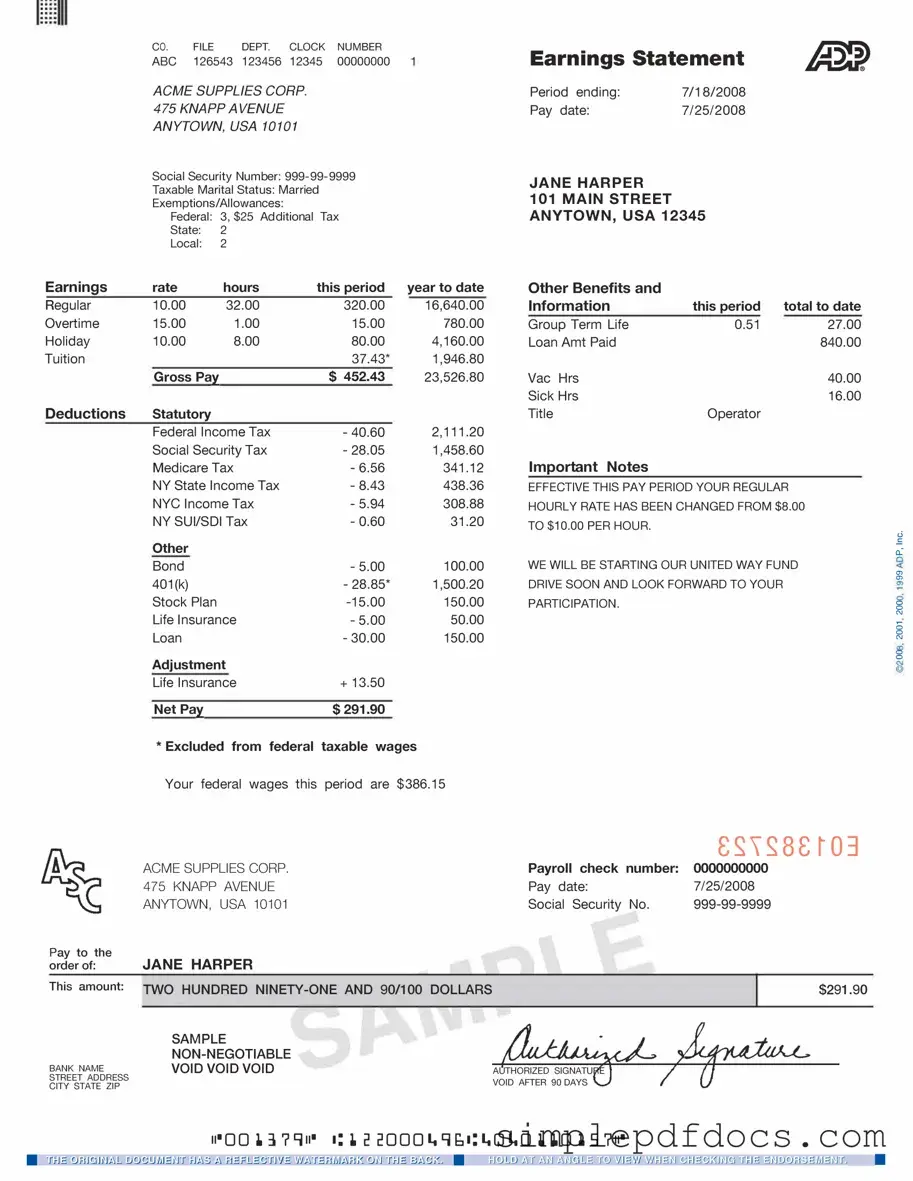Fill Your Adp Pay Stub Form
The ADP Pay Stub form is a document provided by ADP, a leading payroll service provider, that details an employee's earnings and deductions for a specific pay period. This form serves as a crucial record for both employees and employers, ensuring transparency in compensation. Understanding its components can help individuals better manage their finances and verify their pay information.
Get Document Here
